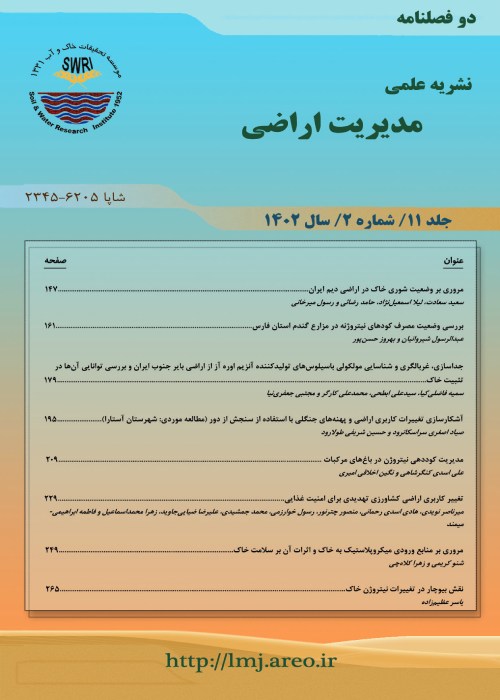Application of rhizobium containing biofertilizers to legume farms (Techniques, potentials, advantages, and limitations)
Author(s):
Article Type:
Research/Original Article (دارای رتبه معتبر)
Abstract:
Legumes, as the main components of human diet, have of long been planted in rotation with other crops. An important characteristic of legumes is their capacity to establish a symbiotic relationship with rhizobium bacteria to fix nitrogen. Proper management of this relationship in soil is a major step toward sustainable agriculture and environmental protection. The discovery and isolation of rhizobium dates back to 130 years ago and it was only a few years later that the first rhizobium containing biofertilizer was made available to the market. In Iran, the biofertilizer was first imported in the 60s for application to soya farms. The abundance of research over the past few decades indicates enhanced performance of legumes as a result inoculating them with rhizobia. The need for rhizobium inoculation may be explained by the lack of especially symbiotic rhizobium bacteria in soils, their low soil populations, and their death or degraded efficiency through time due to environmental stresses. Rhizobium-enriched biofertilizers come in the different forms of liquid, powder, and granules contained in mineral or organic carriers used for seed inoculation. The vast area under legume cultivation, availability of the infrastructure required for biofertilizer production, availability of professionals and technical know-how, public acceptance of organic agricultural crops, and the support mechanisms and incentives provisioned in national macro-policy documents may be claimed as potential motivations for the production and consumption of rhizobium biofertilizers in Iran. However, abundance and rapid productivity of chemical fertilizers, current challenges facing the commercialization of such products, and low consumer awareness and confidence may be claimed as the limitations of such biofertilizers. The following procedures may be recommended for the consumption of rhizobium-containing biofertilizers: conducting surveys of soils from different regions to determine the presence of rhizobia that might be symbiotic with legume crops, investigating the inoculation of target legume seeds with efficient and symbiotic rhizobia, investigating the possibility of cultivating legumes in favorable regions with no history of legume cropping, conducting basic research on indigenous soil bacteria and their competition with rhizobium strains introduced into soils, carrying out molecular research to enhance the symbiotic capacity of legumes, and education and extension activities through both mass and social media to raise public awareness of the advantages of rhizobium biofertilizers.
Keywords:
Language:
Persian
Published:
Journal of Land Management, Volume:10 Issue: 1, 2022
Pages:
95 to 110
magiran.com/p2512097
دانلود و مطالعه متن این مقاله با یکی از روشهای زیر امکان پذیر است:
اشتراک شخصی
با عضویت و پرداخت آنلاین حق اشتراک یکساله به مبلغ 1,390,000ريال میتوانید 70 عنوان مطلب دانلود کنید!
اشتراک سازمانی
به کتابخانه دانشگاه یا محل کار خود پیشنهاد کنید تا اشتراک سازمانی این پایگاه را برای دسترسی نامحدود همه کاربران به متن مطالب تهیه نمایند!
توجه!
- حق عضویت دریافتی صرف حمایت از نشریات عضو و نگهداری، تکمیل و توسعه مگیران میشود.
- پرداخت حق اشتراک و دانلود مقالات اجازه بازنشر آن در سایر رسانههای چاپی و دیجیتال را به کاربر نمیدهد.
In order to view content subscription is required
Personal subscription
Subscribe magiran.com for 70 € euros via PayPal and download 70 articles during a year.
Organization subscription
Please contact us to subscribe your university or library for unlimited access!



